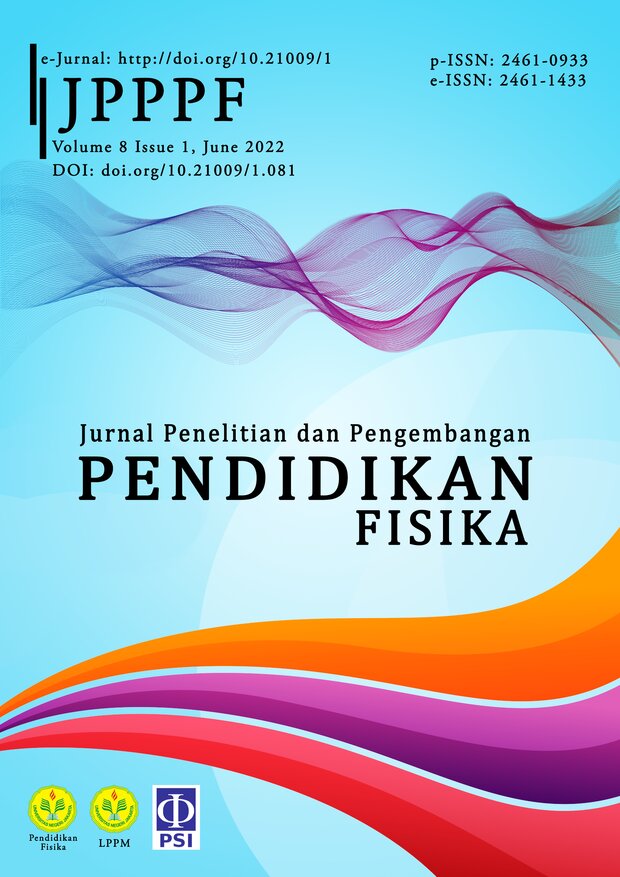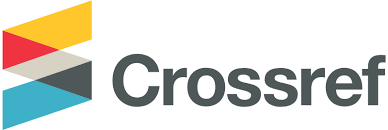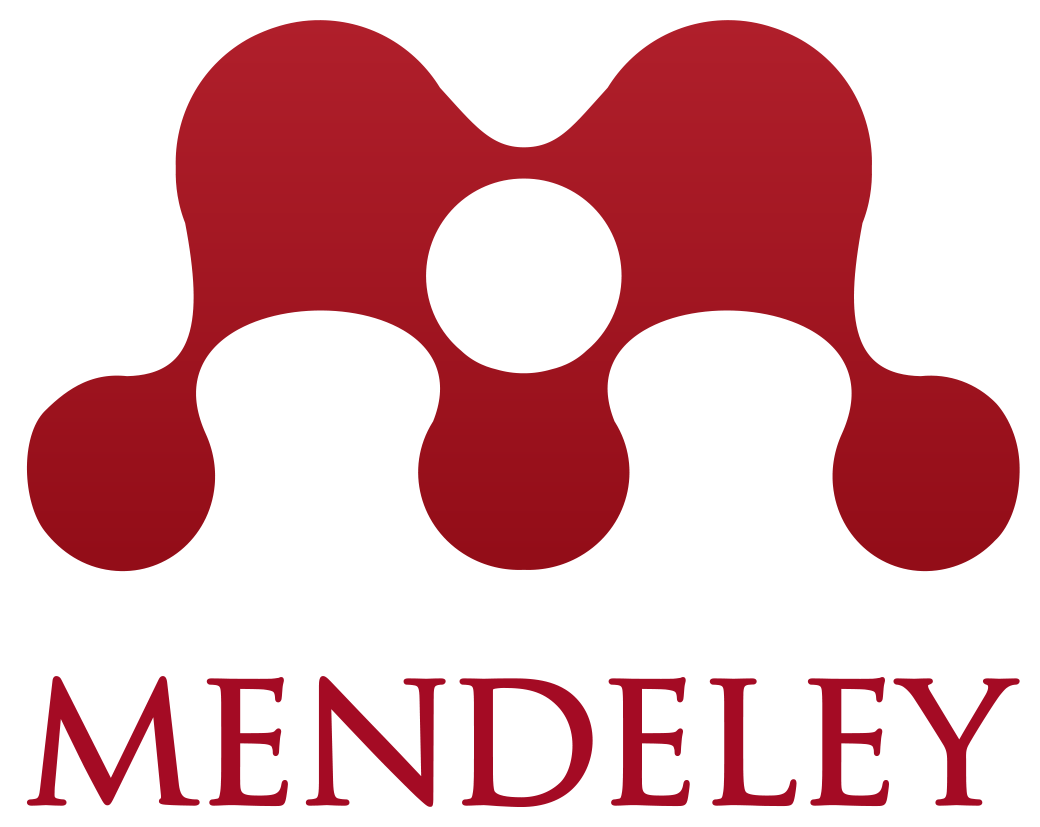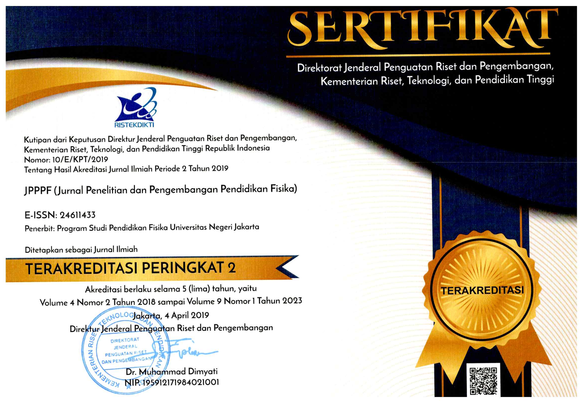Development of Sophisticated Thinking Blending Laboratory (STB-LAB) to Improve 4C Skills for Students as Physics Teacher Candidate
Abstract
The 21st Century Learning is an increasingly interactive and attractive learning era. The learning process in the 21st century does not only focus on teaching and learning activities in the classroom and explaining theories. There need to be laboratory activities that help provide visuals to students, especially future physics teacher candidates. Various innovations have been made in the development of laboratory activity models. There are still many laboratory activity models that focus on one activity, namely real or virtual. Laboratory activities in the 21st century do not always have to focus on super skills or 4C skills currently in the spotlight and forget about analytical skills and the balance between LOTS and HOTS. This study aims to develop a mixed laboratory activity model that can build 4C skills focused on analytical skills and balance between LOTS-HOTS; in addition, two activities are combined into one, real and virtual. The method used in this research is in the form of Research and Development using the ADDIE model with three meetings in implementation. The results obtained in this study, namely STB-LAB, obtained good model and guide validity results. N-Gain data showed that in the control class, only creative thinking skills were compelling enough, with a value of 59.47. In contrast, in experiment class, only communication skills have an effective enough category with a value of 57.84, but other aspects have an effective category with a value > 76.00. The hypothesis test showed that using STB-LAB could improve students as physics teacher candidate 4C Skills.
References
AACTE & P21 2010, ‘21st century knowledge and skills in educator preparation’, paper of collaborative project by the American Association of Colleges of Teacher Education (AACTE) and the Partnership for 21st Century Skills (P21).
Afriani, D, Wilujeng, I & Kuswanto, H 2019, ‘Implementation of Problem Based Learning Model Assisted Edmodo to Measure Students Scientific Communication Skills’, in Journal of Physics: Conference Series, IOP Publishing, p. 12041.
Agustian, HY & Seery, MK 2017, ‘Reasserting the role of pre-laboratory activities in chemistry education: a proposed framework for their design’, Chemistry Education Research and Practice, Royal Society of Chemistry, vol. 18, no. 4, pp. 518-532.
Anidar, J 2017, ‘Teori Belajar Menurut Aliran Kognitif Serta Implikasinya Dalam Pembelajaran’, Jurnal Al-Taujih: Bingkai Bimbingan dan Konseling Islami, vol. 3, no. 2, pp. 8-16.
Aşıksoy, G & Islek, D 2017, ‘The Impact of the Virtual Laboratory on Students’, International Journal of Online Engineering, Attitudes in a General Physics Laboratory, vol. 13, no. 4.
Blândul, VC 2015, ‘Inovation in education–fundamental request of knowledge society’, Procedia-Social and Behavioral Sciences, Elsevier, vol. 180, pp. 484-488.
de Hei, M et al. 2020, ‘Developing intercultural competence through collaborative learning in international higher education’, Journal of Studies in International Education, SAGE Publications Sage CA: Los Angeles, CA, vol. 24, no. 2, pp. 190-211.
ES, SM 2017, ‘Enhancing Students’ Communication Skills through Problem Posing and Presentation’, International Journal of Evaluation and Research in Education, ERIC, vol. 6, no. 1, pp. 17-22.
Faour, MA, Ayoubi, Z & The, Z 2018, ‘The Effect of Using Virtual Laboratory on Grade 10 Students’ Conceptual Understanding and their Attitudes towards Physics’, Journal of Education in Science Environment and Health, vol. 4, no. 1, pp. 54-68, doi: 10.21891/jeseh.387482.
Ghani, IBA et al. 2017, ‘Effects of concept mapping in laboratory learning activities to generate students’ higher order thinking skills in electrolysis’, Advanced Science Letters, American Scientific Publishers, vol. 23, no. 4, pp. 2779-2782.
Gunawan, G, Harjono, A & Sahidu, H 2015, ‘Pengembangan Model Laboratorium Virtual Berorientasi pada Kemampuan Pemecahan Masalah bagi Calon Guru Fisika’, Jurnal Materi dan Pembelajaran Fisika, vol. 5, no. 2, pp. 41-46.
Hanum, NS 2013, ‘Keefektifan e-learning sebagai media pembelajaran (studi evaluasi model pembelajaran e-learning SMK Telkom Sandhy Putra Purwokerto)’, Jurnal pendidikan vokasi, vol. 3, no. 1.
Harackiewicz, JM & Priniski, SJ 2018, ‘Improving student outcomes in higher education: The science of targeted intervention’, Annual review of psychology, Annual Reviews, 69, pp. 409–435.
Indrawati, ES 2019, ‘Membangun Karakter Melalui Implementasi Teori Belajar Menurut Aliran Psikologi Gestal Berbasis Kecakapan Abad 21’, E-Tech: Jurnal Ilmiah Teknologi Pendidikan, vol. 7, no. 2.
Jaya, H 2012, ‘Pengembangan laboratorium virtual untuk kegiatan paraktikum dan memfasilitasi pendidikan karakter di SMK’, Jurnal Pendidikan Vokasi, vol. 2, no. 1.
Khoerunnisa, P and Aqwal, SM 2020, ‘Analisis Model-Model Pembelajaran’, Fondatia, vol. 4, no. 1, pp. 1-27.
Khoiri, N et al. 2017, ‘Teaching creative thinking skills with laboratory work’, in International Journal of Science and Applied Science: Conference Series, p. 256.
Malik, A & Setiawan, A 2015, ‘The development of higher order thinking laboratory to improve transferable skills of students’, in 2015 International Conference on Innovation in Engineering and Vocational Education, Atlantis Press, pp. 36-40.
Malik, A et al. 2017, ‘Learning Experience on Transformer Using HOT Lab for Pre-service Physics Teacher’s’, Journal of Physics: Conference Series, vol. 895, no. 1, doi: 10.1088/1742-6596/895/1/012140.
Malik, A et al. 2021, ‘Collaborative skills of prospective teachers in laboratory activities related to the concept of elasticity’, in Journal of Physics: Conference Series. IOP Publishing, p. 12073.
Megawan, M & Istiyono, E 2019, ‘Physics creative thinking measurement using two-tier multiple choice to support science, technology, engineering, and mathematics’, in Journal of Physics: Conference Series, IOP Publishing, p. 12068.
Nanto, D et al. 2022, ‘The usefulness of LabXChange virtual lab and PhyPhox real lab on pendulum student practicum during pandemic’, in Journal of Physics: Conference Series, IOP Publishing, p. 12047.
Nasrulloh, I & Ismail, A 2017, ‘Analisis kebutuhan pembelajaran berbasis ICT’, Jurnal Petik, vol. 3, no. 1, pp. 28-32.
Nurdyansyah, N & Fahyuni, EF 2016, ‘Inovasi model pembelajaran sesuai kurikulum 2013’, Nizamia Learning Center.
Peña-Ríos, A et al. 2012, ‘Remote mixed reality collaborative laboratory activities: Learning activities within the InterReality Portal’, in 2012 IEEE/WIC/ACM International Conferences on Web Intelligence and Intelligent Agent Technology, IEEE, pp. 362-366.
Purnama, RP et al. 2021, ‘Developing HOT-LAB-Based Physics Practicum E-Module to improve Practicing critical thinking skills’, Journal of Science Education Research, vol. 5, no. 2, pp. 43-49, doi: 10.21831/jser.v5i2.41904.
Putra, Riki Purnama et al. 2021, ‘Uji Perbandingan Virtual Lab dengan Real Lab pada Hukum Archimedes’, Radiasi : Jurnal Berkala Pendidikan Fisika, vol. 14, no. 1, pp. 23-33, doi: https://doi.org/10.37729/radiasi.v14i1.897.
Putra, RP et al. 2021, ‘Student’s Perspective on Virtual Laboratory Using Phet as A Media in Conducting Physics Laboratory Activities’, Tarbiyah: Jurnal Ilmiah Kependidikan, vol. 10, no. 1, pp. 1-9, Available at: http://jurnal.uin-antasari.ac.id/index.php/jtjik/article/view/4113.
Raes, A et al. 2020, ‘A systematic literature review on synchronous hybrid learning: Gaps identified’, Learning Environments Research, Springer, vol. 23, no. 3, pp. 269-290.
Ramadiani, S et al. 2022, ‘Uji Perbandingan Kegiatan Laboratorium berbasis IoT dengan Virtual Laboratory pada Materi Periode Bandul dengan HOTLAB’, Jurnal Penelitian Ilmu Pendidikan, vol. 15, no. 1.
Rannikmäe, M, Holbrook, J & Soobard, R 2020, ‘Social Constructivism-Jerome Bruner’, in Science Education in Theory and Practice, Springer, pp. 259-275.
Rochim, RA, Prabowo, P & Budiyanto, M 2021, ‘Analisis Kebutuhan Perangkat Pembelajaran Model PjBL Terintegrasi STEM Berbasis E-Learning di Masa Pandemi Covid-19’, Jurnal Basicedu, vol. 5, no. 6, pp. 5370-5378.
Sapriadil, S et al. 2019, ‘Effect of Higher Order Thinking Virtual Laboratory (HOTVL) in Electric Circuit on Students’ Creative Thinking Skills’, Journal of Physics: Conference Series, vol. 1204, no. 1, doi: 10.1088/1742-6596/1204/1/012025.
Seery, MK et al. 2017, ‘Developing laboratory skills by incorporating peer-review and digital badges’, Chemistry Education Research and Practice, Royal Society of Chemistry, vol. 18, no. 3, pp. 403-419.
Setya, W et al. 2021, ‘Implementation of higher order thinking laboratory (HOTLAB) on magnetic field with real blended virtual laboratory to improve students critical thinking skills’, in Journal of Physics: Conference Series, IOP Publishing, p. 12019, doi: 10.1088/1742-6596/2098/1/012019.
Sugiyono 2013, ‘Metode Penelitian Kombinasi’, in Metode Penelitian Kombinasi, 1st edn. Bandung: Alfabeta, doi: 10.1145/3132847.3132886.
Sulistiowati, N et al. 2013, ‘Perbedaan Penggunaan Laboratorium Real dan Laboratorium Virtual Pada Keterampilan Proses dan Hasil’, Pendidikan Sains Pascasarjana Universitas Negeri Surabaya, vol. 2, no. 2, pp. 191-197.
Sulisworo, D, Ristiani, A & Kusumaningtyas, DA 2019, ‘Developing the physics magazine as an alternative of personal learning media’, Journal of Physics: Conference Series, vol. 1280, no. 5, doi: 10.1088/1742-6596/1280/5/052015.
Suryanti, E et al. 2019, ‘Persepsi Mahasiswa terhadap Penggunaan Virtual Laboratory dalam Pembelajaran Biologi Molekuler’, Journal of Natural Science and Integration, vol. 2, no. 2, p. 32, doi: 10.24014/jnsi.v2i2.7884.
Tayeb, T 2017, ‘Analisis dan manfaat model pembelajaran’, AULADUNA: Jurnal Pendidikan Dasar Islam, vol. 4, no. 2, pp. 48-55.
Tayebinik, M & Puteh, M 2013, ‘Blended Learning or E-learning?’, pp. 103-110.
Williams, MK 2017, ‘John Dewey in the 21st century’, Journal of Inquiry and Action in Education, vol. 9, no. 1, p. 7.
Zulmaulida, R & Dahlan, JA 2018, ‘Watson-Glaser’s critical thinking skills’, in Journal of Physics: Conference Series, IOP Publishing, p. 12094.
Copyright (c) 2022 Rena Denya Agustina, Riki Purnama Putra, Milla Listiawati

This work is licensed under a Creative Commons Attribution 4.0 International License.











